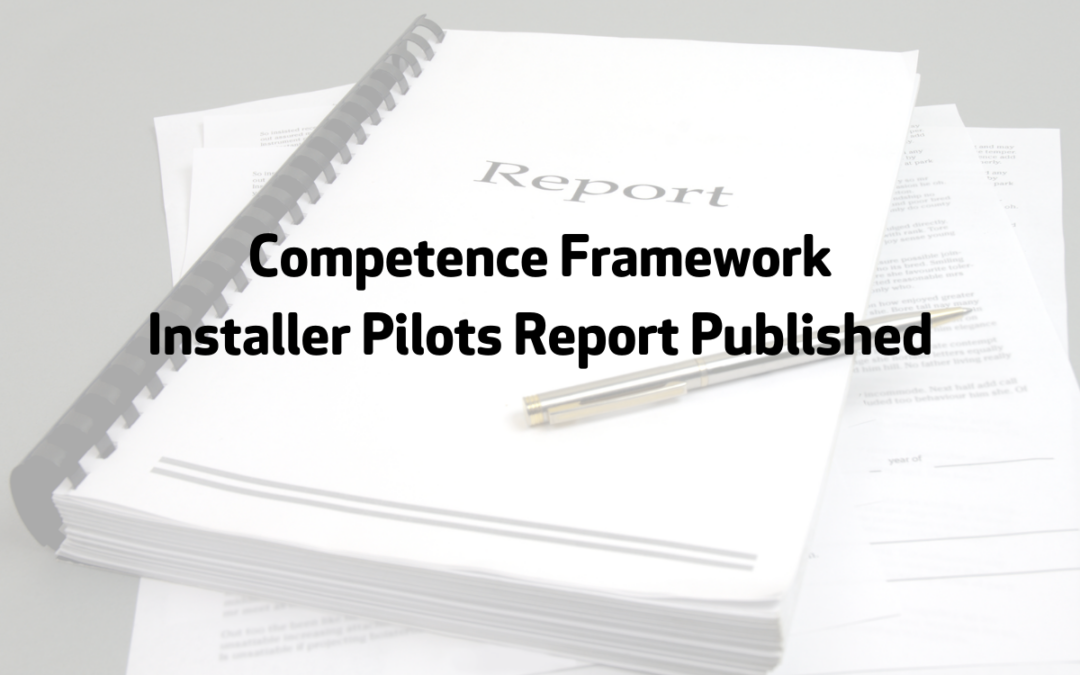Building Safety – First stage complete in journey towards fully competent installer workforce
The construction and built environment sector must maintain momentum to ensure the competence of installation organisations and employees as a key report highlights ‘red flags’ amid wider progress on Building Safety.
A report has been published setting out the current state of competence arrangements for those installing products and systems in buildings. Prepared by members of Working Group 2, which was set up as part of the post-Grenfell Competence Steering Group, volunteers from Working Group 2 have worked with six pilot installer sectors – Dry Lining, Domestic Plumbing and Heating, Fire Detection and Alarms, Fire Stopping Specialist, Rainscreen Cladding, and Roofing – to benchmark existing competence arrangements.
This Pilot – Phase One stage sets a baseline to identify shortfalls and considers the changes needed to create competence frameworks that comply with the recommendations of Setting the Bar. In 2020, Setting the Bar outlined how industry must improve the competence of those procuring, designing, constructing, inspecting, assessing, managing, installing and maintaining higher risk residential buildings.
The report recognises that good practice exists in each of the six sectors that allows them to demonstrate elements of competence. Yet there are elements of each sectors’ arrangements that the working group has red rated, showing that significant work is required to meet the requirements of Setting the Bar.
Each sector will now move to develop sector-specific competence frameworks that play to existing strengths and close off any red flag issues raised in the report. This process – which will also develop a timeline and implementation plan for each sector – is expected to take six to nine months.
The report also calls on other installer sectors to begin their own competence journey now, offering guidance to help them do so which Working Group 2 has developed during the pilots.
Iain McIlwee, FIS Chief Executive who was a participant in the Dry Lining pilot, said:
“FIS has taken an active role in this work and will continue to work with our members and the wider sector to ensure that competency is understood, the support mechanisms needed to deliver a competent workforce are in place and that we are able to track, manage and reward competence effectively. We have championed and led the Dry Lining work because it is an important part of most building operations, it is a labour intensive process and frankly has been hugely undervalued in the construction process. This work is the building block, a fresh start not only to delivering a better competency framework, but helping to raise the profile and change expectations about the vital work that dry liners do. We do not underestimate the enormity of this task given the current socioeconomic backdrop, but do recognise that it is essential work that we must take on together.”
Mark Reynolds, Sponsor for the CLC’s People and Skills Network, said:
“Publication of Working Group 2’s latest report marks an important milestone in progress towards improved standards of installer competence in the built environment. The CLC will continue to do all we can to assist with the pilots and I would urge other installer sectors now to embark on their own competence journeys, drawing on the resources which Working Group 2 has provided.”
Nick Jarman, Chair of Working Group 2, said:
“There has been much collaboration since the formation of Working Group 2, focussed on how we can learn from the lessons of the past and forge a new pathway of improvement for the future with the objective of providing a safer built environment overall. I would like to thank sector representatives and my Working Group 2 colleagues for getting the pilot process to the point this report can be published. Working Group 2 looks forward to further engagement and collaboration with the wider installer sector to continue progress on this crucial workstream.”

